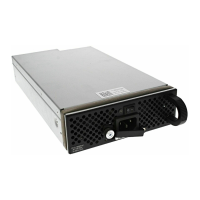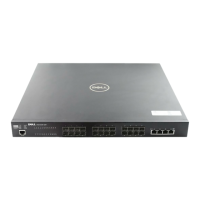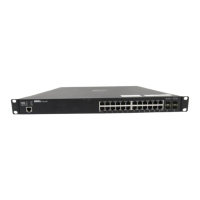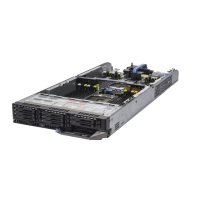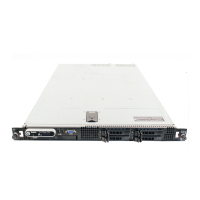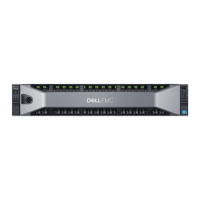628 | Virtual LANs (VLAN)
www.dell.com | support.dell.com
To tag frames leaving an interface in Layer 2 mode, you must assign that interface to a port-based VLAN
to tag it with that VLAN ID. To tag interfaces, follow these steps:
Figure 37-4 shows the steps to add a tagged interface (in this case, port channel 1) to VLAN 4.
Figure 37-4. Example of Adding an Interface to Another VLAN
Step Command Syntax Command Mode Purpose
1 interface vlan vlan-id CONFIGURATION Access INTERFACE VLAN mode of the VLAN to
which you want to assign the interface.
2
tagged interface INTERFACE Enable an interface to include the IEEE 802.1Q tag
header.
FTOS#show vlan
Codes: * - Default VLAN, G - GVRP VLANs
NUM Status Q Ports
* 1 Inactive
2 Active T Po1(So 0/0-1)
T Tengig 3/0
3 Active T Po1(So 0/0-1)
T Tengig 3/1
FTOS#config
FTOS(conf)#int vlan 4
FTOS(conf-if-vlan)#tagged po 1
FTOS(conf-if-vlan)#show conf
!
interface Vlan 4
no ip address
tagged Port-channel 1
FTOS(conf-if-vlan)#end
FTOS#show vlan
Codes: * - Default VLAN, G - GVRP VLANs
NUM Status Q Ports
* 1 Inactive
2 Active T Po1(So 0/0-1)
T Tengig 3/0
3 Active T Po1(So 0/0-1)
T Tengig 3/1
4 Active T Po1(So 0/0-1)
FTOS#
Use the show vlan command to
view the interface’s status.
Interface (po 1) is tagged and in
VLAN 2 and 3
In a port-based VLAN, use the
tagged command to add the
interface to another VLAN.
The show vlan command
output displays the interface’s
(po 1) changed status.
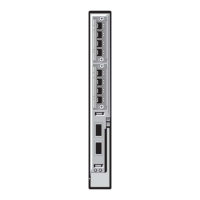
